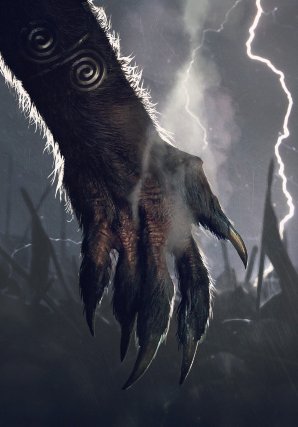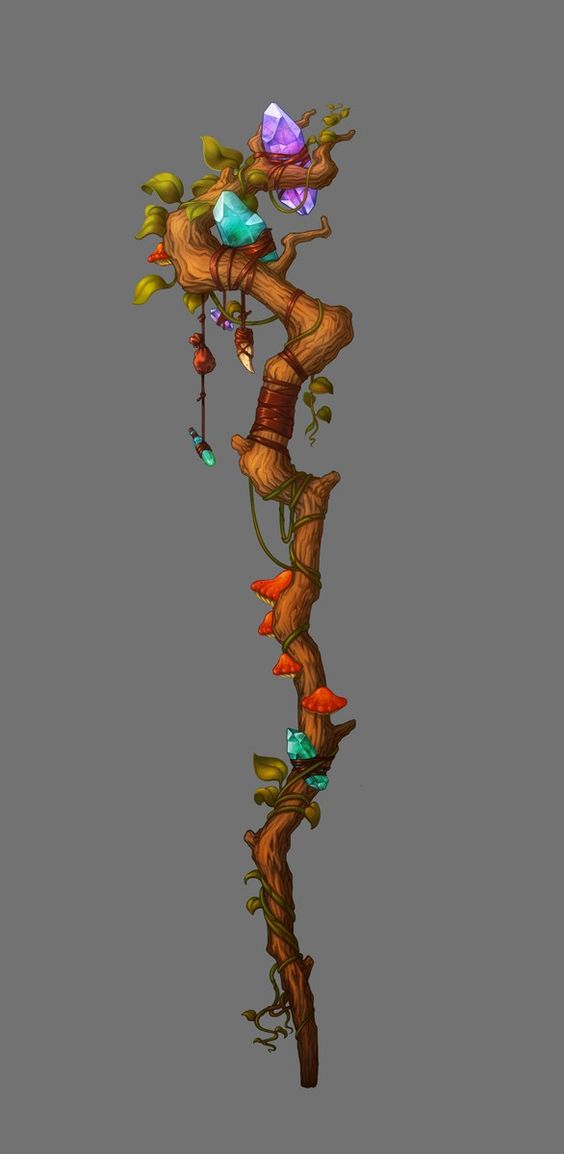We are back at it with another Dungeon and Dragons (D&D) spell. With hundreds of spells already available in the D&D 5th edition, how will you know what is good and bad? Which spells have the aesthetic that you are looking for? Most of all, what do those spells do?
Every expansion of D&D adds more rules, spells, character features, and class abilities. Sometimes it might get confusing when you do not keep up-to-date, which is fair given the price of some of these hardcovers. I have constantly been updating my knowledge on D&D as a Dungeon Master (DM), so leave it to me from the Player’s Handbook to Spelljammer adventures.
With that being said, let’s get into the Primal Savagery 5e Guide.
Primal Savagery Effect
| Casting Time | 1 Action |
| Range | Touch |
| Target | Self |
| Components | S |
| Duration | Instantaneous |
This spell channels primal energy through your teeth and nails, turning them into fangs and claws. Then you strike with corrosive power making a melee spell attack against a creature next to you.
On a hit, the target takes 1d10 acid damage. After the attack (miss or hit), your teeth and nails turn back to normal.
The spell’s damage increases by 1d10 when you reach the 5th level (2d10), 11th level (3d10), and 17th level (3d10).
This spell is a cantrip, meaning you can cast it for an endless time without consuming any resources. To balance that, most cantrips do small amounts of damage or provide minor buffs or boons to aid the party. Other cantrips are for utility usage, from providing light to creating small illusions.
This cantrip is a damage-based cantrip meaning that it scales up in power as the player levels up, not necessarily in the same D&D class as the spell requires but rather the total level of the Player. It does not do the most damage for a spell, but since it does not cost a spell slot, we can think of it as similar to a weapon attack from a fighter.
What Classes can use it?

Given that WoTC created this spell with the expansion “Xanathar’s Guide to Everything” (XGE), one could say that it is a relatively new spell added to the already immense pool of spells in D&D. This spell is a Druid-only cantrip, so aside from the feat Magic Initiate then there is no way to learn this spell.
Druids

With this being a new spell, you can see that it adds to the flavor of being a druid, being able to partially channel that inner wildness and unleash it without assuming your animal form. It also pairs well with the other spells released in XGE as it makes your Druid a literal force of nature as it tears and claws its way through your enemies.
Is it good?
Druids are classes not meant for melee combat in their humanoid form, but it is always nice to have one if something happens. So your choice in melee is between this and Shillelagh. As for ranged options, you have many more options, whether it be saving throw spells or ranged spell attacks.
You are free to play druids however you wish, from supports to debuffs, tanks, and damage. However, when comparing spells for spells, other classes can do your spell damage and more. For example, you can upgrade a warlock’s eldritch blast to deal with the regular 1d10 but add his charisma modifier to the attack damage compared to a druid’s regular 1d10.
The list may go on, but since we are looking directly at Druid and only Druid, I would say yes, for its intended purpose, it stands to be comparable and, to some people, better than other cantrips that Druid has.
I would say that this is one of the cantrips you want to consider taking early on rather than later in the game. It is strong as one of the highest damage cantrips in a Druid’s spell list and overall game. While its utility may be lacking, you can instantly make up for that by taking an utterly utility-based cantrip rather than fishing in the middle.
Let’s look into detail as to why this cantrip is powerful.
Good points

- Damage scales with the total level
- One of the highest damage druid cantrip
- Damage type is rarely resisted or ignored
- Opens your bonus action for additional spell casting
- Only takes one action to attack (No prep time needed)
As you can see, Primal Savagery is a tremendous offensive tool for a druid caught in the melee. It has high damage output, and its acid typing is actually to its advantage as very few things are resistant to acid damage. You can even use it to stop a troll’s regeneration in a pinch.
It opens your bonus action to be used for something else, whether it be Wild shaping or casting a leveled spell-like healing word, healing spirit, or guardian of nature.
Bad points
- Does nothing at the range
- It leaves your Druid in melee range (bad for low Constitution druids)
- Low average damage before level 5
- Many better alternatives for action economy
It does leave you vulnerable to being flanked as a melee spell, especially since you have to be in your humanoid form to cast this spell. Thus, you are more open to getting stabbed than if you were a bear.
Many of your more powerful spells require an action to cast, so more often than not, it would be better to use your action to cast a spell rather than Primal Savagery. For example, Tidal Wave, Polymorph, or Cure Wounds do more than just the 1d10 damage, as they either control the enemy or even heal.
Good Cantrips
I want to preface this by saying that I will only be looking at the Druid spell list for possibilities. I will not go deep into the spell’s details, but I will list down a few examples with a few sentences explaining why those cantrips are considered “good.”

- Guidance: This spell is everyone’s best friend, it is a concentration spell, but you can cast it on anyone doing a skill check to give them a bonus of 1d4 to their roll. It can make or break a check, so make sure to hand these out often. While you cannot cast this on multiple people, its effectiveness even extends to late in the game as just the chance of having a +4 is well worth the free cost.
- Mold Earth: this spell requires your imagination and time, as given enough of both, you can create your lair, dungeon, and traps. Sure, you can only move 5ft of the earth at a time, but each time you cast, this is around six seconds long. Imagine how much you can move in a day? A week? A year even? Outside of combat, this spell is superb; it can even help in combat if you make pitfall traps or other obstacles for your opponents to get through.
- Shillelagh: This takes a bonus action to cast, and for another, it lasts for a whole minute in combat without getting consumed after you land a hit. Make sure that you hold on to that club tight; otherwise, the spell will fizzle.
Each damage spell has its benefits and detriments, so pick which one is good depending on your preference; I believe that this is one of the better ones among the bunch. However, in the following list, you will see what I consider to be the cantrips that could have been improved on or outright changed to become more useful in the 5th edition.
Bad Cantrips
- Control Flames: A spell that is meant to control fire primarily seems good on paper; however, if you look at its effects broken down, you can see that other spells outdo it. Its main effect is to control the fire within a 5ft cube; this requires a nonmagical flame to be already present. It can consume more fuel, be extinguished, or be manipulated to create shapes and images loosely. If you extinguish the fire, the spell will immediately be useless as there will be no fire to control. If your goal is to create fire spells like Create Bonfire or Firebolt can do the same thing but with actual damage attached to it. So, in my opinion, it is not a good spell.
- Druidcraft: Sad to say, but this spell has no combat capabilities, which usually would be fine if its abilities were helpful outside of combat, but aside from a few niche scenarios, this spell is really bad. It is broken down into a few minor effects; foretelling the weather, sparking plant growth, creating little sensory effects, and putting out torches and candles. Predicting the weather is only helpful while sailing or getting the perfect encounter with Call lighting. While plant growth is excellent, you can only do it to a tiny plant at a time, and depending on your DM, it might not have any mechanical effect. As for the other two effects, other cantrips can do it better.
- Resistance: This spell is like Guidance because it gives a bonus of a d4 to an ally and is a concentration spell. Instead of skill checks, this gives a bonus to saving throws. However, rarely do you ever find the opportunity to cast this in combat. This concentration spell only lasts one minute, so you cannot even cast this while waiting for a surprise encounter; otherwise, you would be releasing this spell constantly. Even if you throw it preemptively, why not cast Guidance instead to perceive the ambush or disarm the trap? I believe that it is better to be proactive than reactive.
Again, these are my opinions, though if you believe that these spells are beneficial, please use them.
Combo
With all of this in mind, can we make Primal Savagery better than it already is? Here are a few class features that work with this spell and a few other spells or feats that can increase its effectiveness.
Be warned that making a cantrip-based build is not considered optimized aside from Eldritch Blast. Some other players at your table might complain and ask you to play correctly, and these combinations are just ways to make Primal Savagery hit harder and sometimes better.
- Elemental Adept (Acid): This feat allows you to ignore the acid resistance of a creature, as well as treat any “1” rolled as a “2”.
- Guardian of Nature: while in the Great Tree form, you gain an advantage in Dexterity and Wisdom-based attacks, temporary HP, and creating difficult terrain around you. While it is concentration, this allows you to bog the enemy down and still dish out damage using cantrips.
- Elemental Bane: this allows you to pick an enemy and a damage type (acid) and make them vulnerable to that damage type, effectively doubling your damage.
- Silence: Since Primal Savagery only needs somatic or movement, you can cast it in a silence bubble making other casters much more vulnerable as they cannot retaliate.
- Quickened spell: this puts the casting time down to a Bonus action, which leaves your action open to cast leveled spells.
- Hex: This spell does additional damage whenever you land an attack against the victim, including landing spell attacks.
VS Shillelagh

So, why take this over, Shillelagh? While they are both spells meant to give a druid a little extra kick in the melee, that is the only similarity between them.
As we have already stated, Primal Savagery must be cast repeatedly to keep making attacks against another target. While it does not add its wisdom modifier to the damage, it does do greater damage at a 1d10 that scales with level.
On the other hand, Shillelagh only needs to be cast once as a bonus action. Then so long as you do not let go of the weapon or recast the spell, it persists. This spell changes your wooden weapon into a 1d8 added with your wisdom modifier for damage. This lasts for one whole minute, so having a magic weapon for one minute is quite the boon at early levels.
So what is there to consider exactly? Two things, in particular, stand out, Their scaling and how they interact with Attacks of Opportunity. Scaling wise Primal Savagery does more damage as the levels get higher, adding a die rather than just the wisdom stat. However, you must have the War Caster feat for Primal Savagery to be used as an attack of opportunity.
An added note, Shillelagh works better when multi-classed with classes that can attack multiple times, such as monk, fighter, paladin, or barbarian; At the same time, Primal Savagery does not benefit from multiclassing.
Both have their niches and depend on how you want to build your Druid. I prefer Primal Savagery, but others prefer Shillelagh.
FAQ
Question: Is Primal Savagery considered a melee attack?
Answer: No, it is considered casting a spell at melee range. So it does not benefit from extra attack or other abilities that require a melee attack.
Question: Is Primal Savagery considered magical?
Answer: Yes, the damage from Primal Savagery is considered Magical Acid damage.
Question: Does Divine Smite work with Primal Savagery?
Answer: No, Divine Smite requires a melee weapon attack, but Primal Savagery is considered casting a spell at melee range.
Conclusion
Primal Savagery is an excellent spell to take if you want to build a melee druid. While the spell may pale compared to other cantrips or leveled spells, it still pulls its weight with its relatively high damage die.
I would take the spell in a heartbeat as I tend to end in the melee after my Druid’s animal form gets dispelled or killed. It does a rare damage type, and its scaling with level and its free cost. This spell can be used as often as a fighter’s sword.
- Prestige Classes 5e Guide - September 20, 2022
- Rod of the Pact Keeper 5e Guide - September 15, 2022
- Sanctuary 5e Guide - September 14, 2022


